
Shrubs Around Las Vegas, Vegetation Around Las Vegas
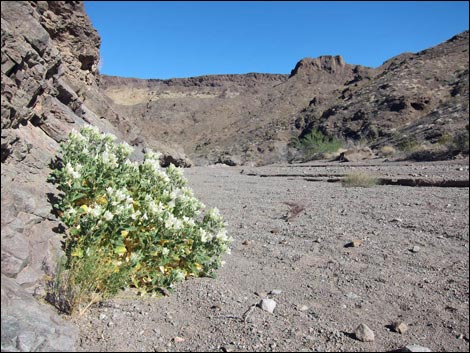 |
General: Desert Stingbush (Eucnide urens), also called Rock Nettle and Velcro Plant, is a small, perennial, rounded shrub that grows to at most 3-feet tall. Clumps of dead leaves often remain attached to the plant. The leaves are about 1/2-inch long, oval, irregularly toothed, and gray-green. The leaves are covered with tiny, needle-like, barbed, stinging hairs that are very difficult to remove from human skin. When the leaves are green, the stinging hairs pose little problem (other than the velcro problem), but when the leaves are dry, the stinging hairs become quite nasty. The flowers are fairly large and open, with five, pale, cream-colored petals. Desert Stingbush is a fairly common component of vegetation communities on well-drained sandy, gravelly, and rocky soils in washes and on rocky outcrops in the Upper Sonoran (Mojave Desert Scrub) life zone. Family: Loasa (Loasaceae). Other Names: Velcro plant. Rock nettle. This species is often called “Rock Nettle,” but Rock Nettle (Eucnide rupestris) is an annual plant that occurs south of Las Vegas in California, Arizona, and northern Mexico. |
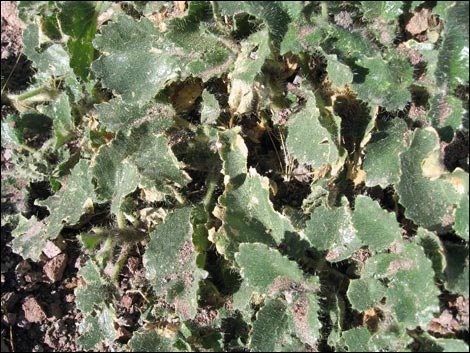 |
Plant Form: Small, perennial, rounded shrub to about 3-feet tall. Clumps of dead leaves often remain attached to the plant. Height: Usually about 1-foot tall; to 3 feet. Bark: Stems: Leaves: To about 1/2-inch long, generally oval and irregularly toothed, gray-green. Leaves are covered with long, needle-like, barbed, stinging hairs that are very difficult to remove from human skin (voice of experience). When the leaves are green, the stinging hairs pose little problem, but when the leaves are dry, the stinging hairs are quite nasty. Flowers: Blooms in late spring and early summer. Inflorescence: cyme. Petals: free (not fused), 1 to 2-inches long, spreading upward, whitish to pale yellow. |
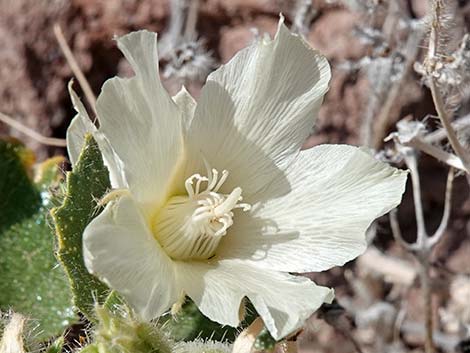 |
Seeds: Fruit: capsule, 1/4 to 1/2-inch long. Habitat: Dry, well-drained sandy, gravelly, and rocky soils on upper bajadas and moderate slopes into the lower mountains. Often found growing in cracks on the sides of cliffs. Elevation: To about 4,500 feet. Distribution: California to southwestern Utah and Arizona, south into northern Mexico. Comments: This plant is covered with many, tiny spines on the leaves, stems, and other parts. When dry, the spines are irritating and difficult to remove. |
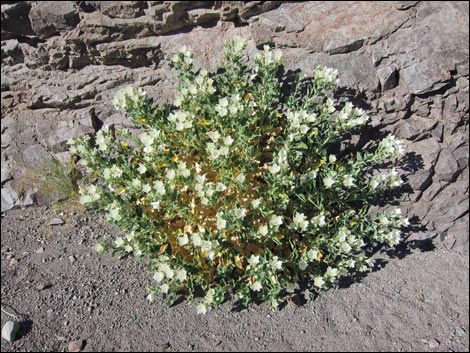 |
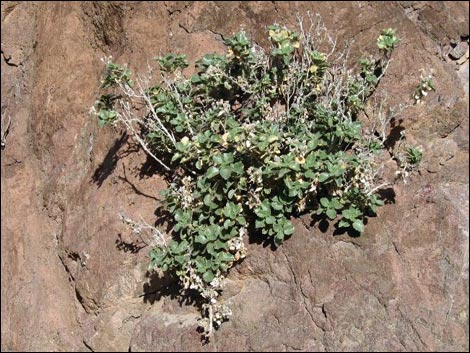 |
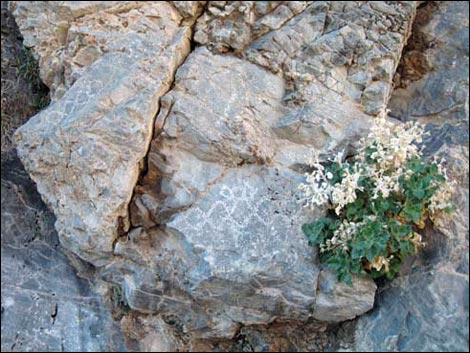 |
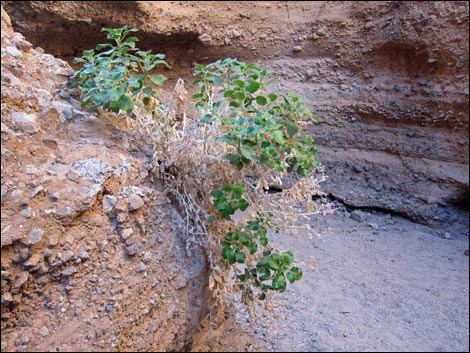 |
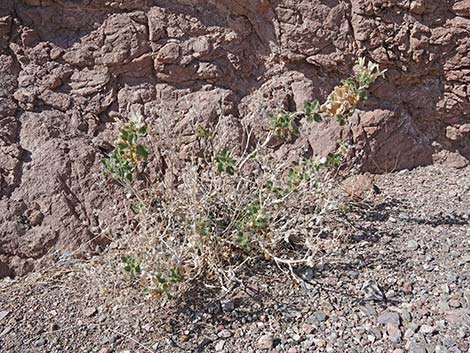 |
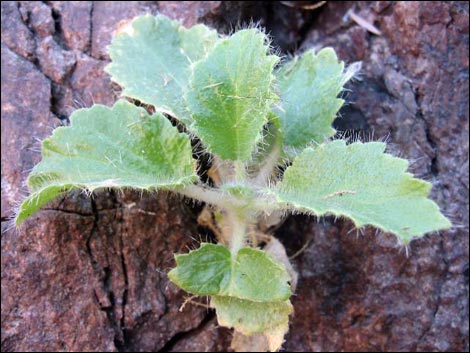 |
 Desert Stingbush leaves |
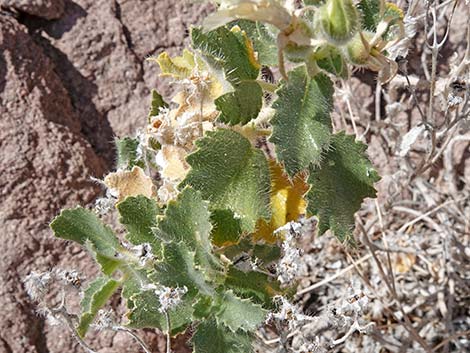 Desert Stingbush leaves |
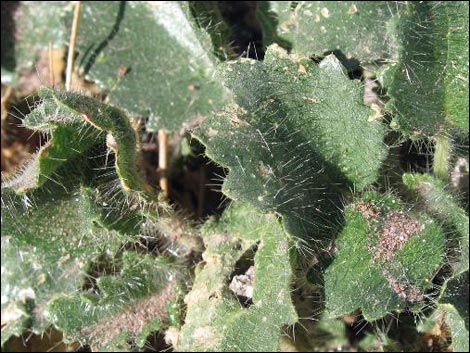 Desert Stingbush leaves are covered with hairs that dry to spines |
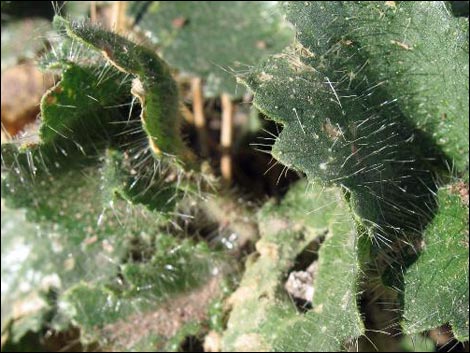 Desert Stingbush leaves are covered with hairs that dry to spines |
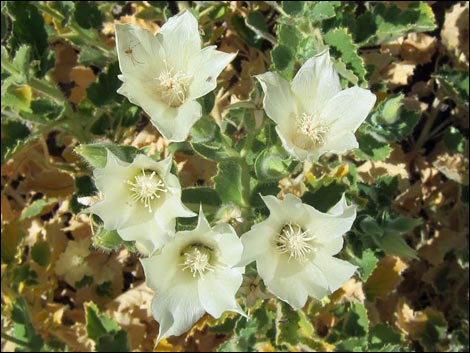 |
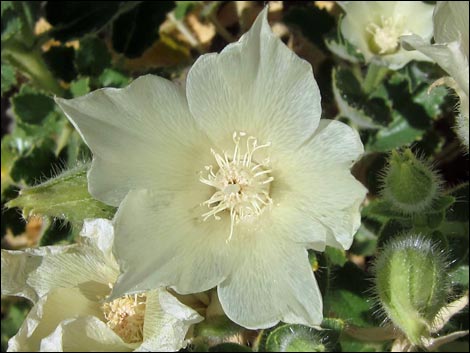 |
 Desert Stingbush flower |
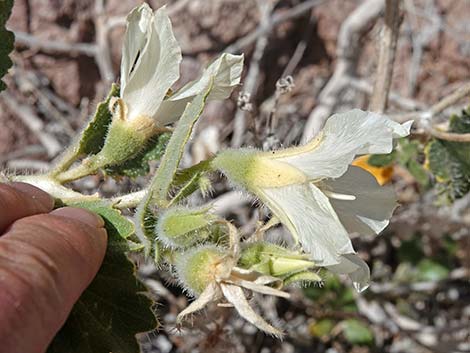 Desert Stingbush flowers and developing seedpod |
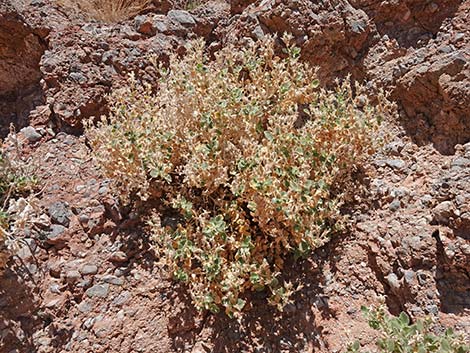 Desert Stingbush drying at the start of summer |
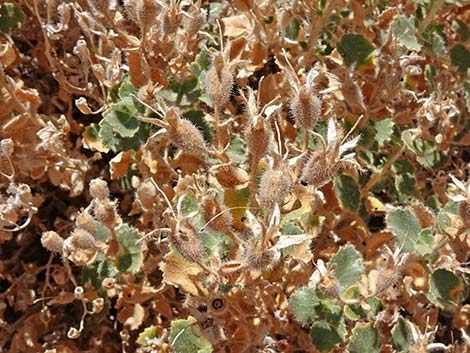 Desert Stingbush drying at the start of summer |
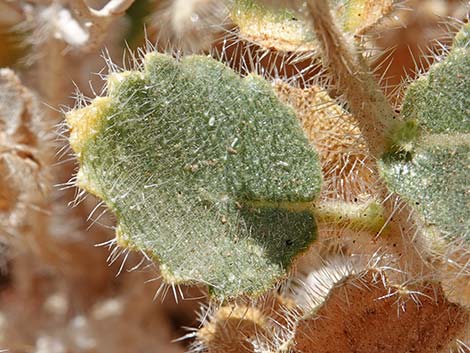 Desert Stingbush drying at the start of summer |
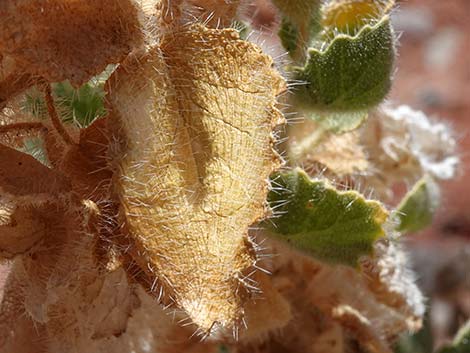 Desert Stingbush: dry hairs become spines that carry in the breeze |
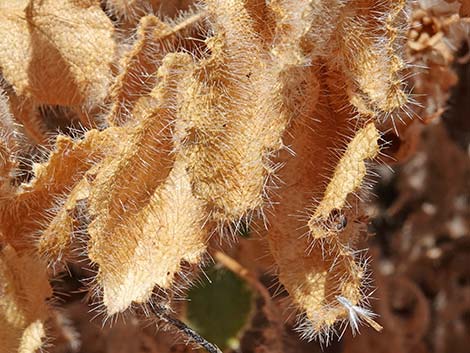 Desert Stingbush: dry hairs become spines that carry in the breeze |
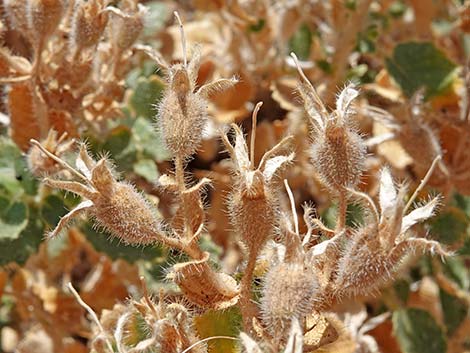 Desert Stingbush: ripe seedpods |
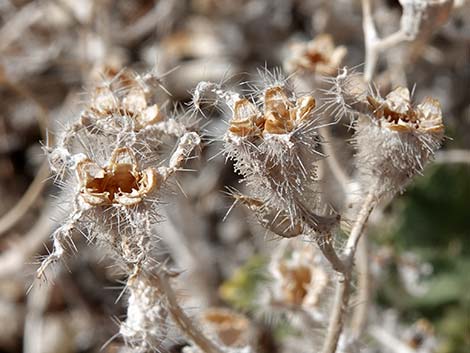 Desert Stingbush old, open seedpods |
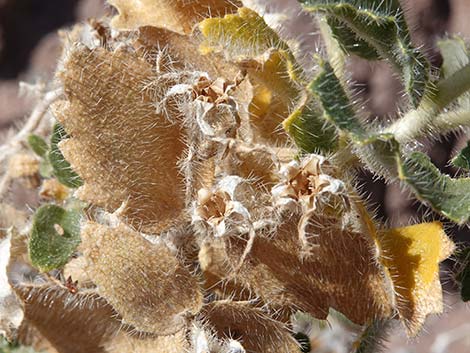 Desert Stingbush old seedpods and dried leaves |
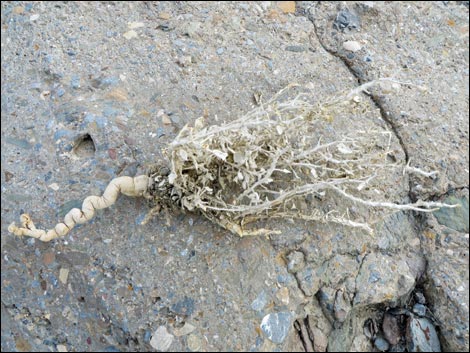 Desert Stingbush: dead plant and roots |
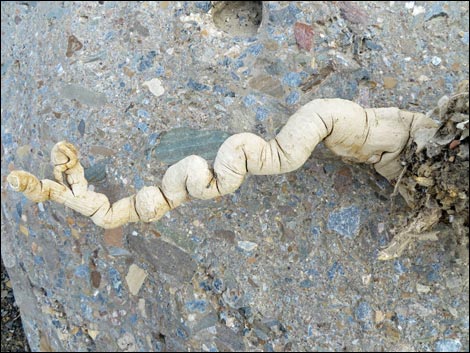 Desert Stingbush: stout taproot |
Note: All distances, elevations, and other facts are approximate. Names generally follow the USDA database.
![]() ; Last updated 220814
; Last updated 220814
| All Shrubs | Plant Species Index | Glossary | Copyright, Conditions, Disclaimer | Home |